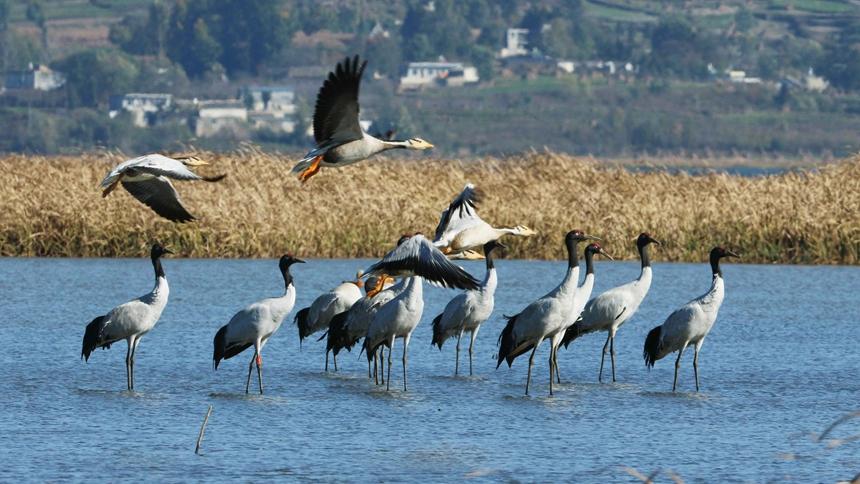Bird flu virus detected in raw milk from dairy farm in U.S. state California
LOS ANGELES, Nov. 24 (Xinhua) -- Public health officials in the western U.S. state of California confirmed on Sunday that the bird flu virus was detected in a retail sample of raw milk produced by a local dairy farm.
The Santa Clara County Public Health Department, which has been testing raw milk from local retailers as part of a monitoring program for H5N1 avian influenza, said in a news release that the county's public health laboratory identified the H5 virus in samples of raw milk produced by Raw Farm LLC on Nov. 21.
The County immediately notified the California Department of Public Health, said the news release, adding that the raw milk was voluntarily recalled by the company and the state has advised the public to not consume the contaminated raw milk.
The California Department of Public Health on Sunday warned the public to avoid consuming one batch of cream top and whole raw milk produced and packaged by Raw Farm LLC of Fresno County.
"No illnesses associated with this lot of raw milk have been reported," said the agency.
Public health officials said they are urging customers to "immediately return any remaining product to the retail point of purchase" and are also notifying retailers to remove the affected raw milk from their shelves.
H5 bird flu is widespread in wild birds worldwide and is causing outbreaks in poultry and U.S. dairy cows with several recent human cases in U.S. dairy and poultry workers, the U.S. Centers for Disease Control and Prevention (CDC) said.
The agency confirmed a human infection with H5N1 bird flu in a child in California on Friday. It is the first reported avian influenza H5 virus infection in a child in the United States.
So far, 55 human cases of H5 bird flu have been reported in the United States during 2024, with 29 in California, according to data released by the CDC.
The CDC's risk assessment for the general public is low. However, people with exposure to infected or potentially infected animals, such as birds, dairy cattle, or other animals, or to environments contaminated by infected birds or other animals, are at higher risk of infection.
Photos
Related Stories
- Ground beef recall heightens ongoing food safety fears in U.S.
- Arab League condemns U.S. veto on UN resolution demanding Gaza ceasefire
- Nearly half of L.A.'s record homelessness budget went unspent: city controller
- U.S. regulators push Google to divest Chrome browser
- Trump taps former acting U.S. attorney general to serve as NATO ambassador
Copyright © 2024 People's Daily Online. All Rights Reserved.









